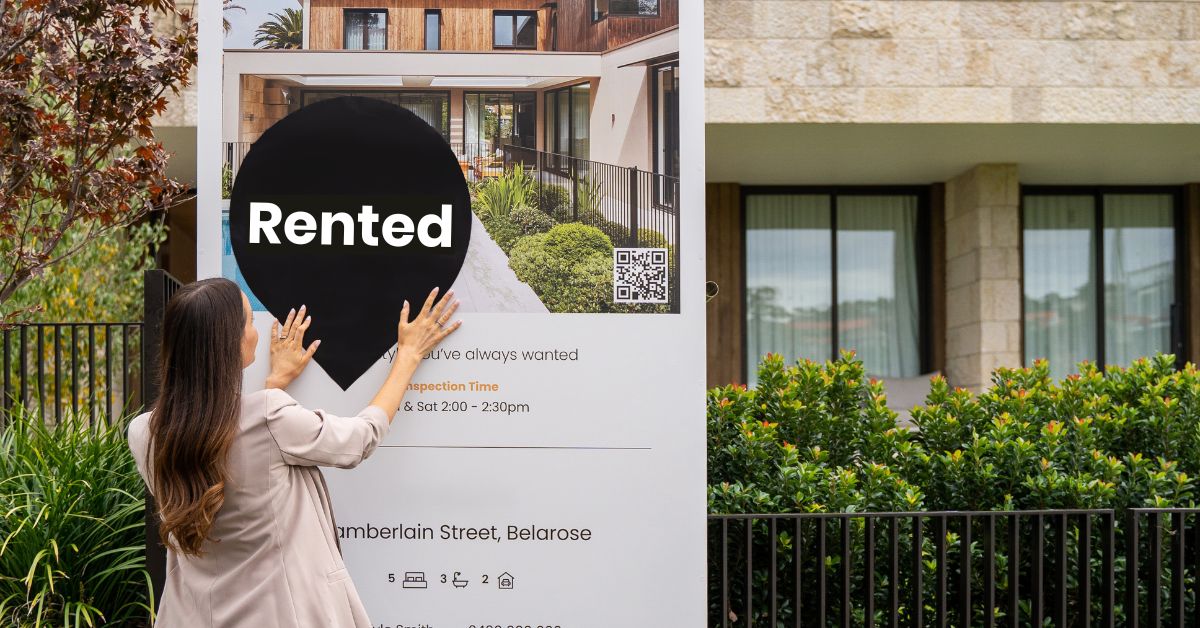Choosing Wisely: Urban or Regional Property Investment

The golden rule of investing is to find a product or service that is going to increase your return. Property has always been seen as a prime investment opportunity across New Zealand as it maintains and grows in value.
While you can find investment opportunities across the country, location will be a significant factor. Deciding between urban and regional investments requires a deep understanding of your investment objectives, risk tolerance, and long-term aspirations.
Urban property investment
Urban areas have repeatedly been a favoured choice for real estate investments. The allure people due to their proximity to amenities like supermarkets, public transportation, schools, and job opportunities, making them attractive to both investors and tenants alike.
Pros of urban real estate
High demand: Urban areas, such as Auckland, Wellington, or Christchurch, attract a diverse range of residents, businesses, and industries. The steady influx of people into these cities sustains a robust demand for real estate properties. For instance, Auckland experiences significant population growth due to migration and internal migration from other parts of the country. This consistent demand for housing fuels competition among buyers and renters, driving up property values and rental incomes.
Capital growth potential: The dynamism of urban areas contributes to a steady gain in property values over time. Population growth, coupled with job opportunities and infrastructure development, fuels the demand for housing, leading to an increase in property prices. For example, ongoing infrastructure projects like transport upgrades or commercial developments in central business districts often contribute to capital growth in urban properties. In Auckland, the expansion of public transportation networks like the City Rail Link enhances connectivity and increases property values in surrounding areas.
Attractive rental returns: Urban properties in major cities often command higher rental incomes due to the large pool of potential tenants. With amenities like proximity to workplaces, educational institutions, entertainment venues, and public transportation, urban properties offer convenience and accessibility sought after by tenants. This high demand ensures a steady stream of rental income for investors, providing financial stability and return on investment.
Market stability and liquidity: The liquidity of urban real estate markets allows for quicker buying and selling of properties compared to rural areas. Properties in cities tend to have a higher turnover rate, providing investors with flexibility and security in their investment decisions. Additionally, the presence of a diverse range of buyers and sellers contributes to market stability, reducing the likelihood of drastic price fluctuations.
Cons of urban real estate
High entry costs: The vibrant urban landscape comes with a higher price tag for investors. In cities like Auckland, where property prices are among the highest in the country, investors may face steep upfront costs, including higher purchase prices, and legal fees. Additionally, ongoing expenses such as property maintenance, insurance, and council rates can add to the financial burden of owning urban properties.
Competition and volatility: Urban real estate markets, particularly in major cities, can be fiercely competitive. Limited supply and high demand often lead to bidding wars among buyers, driving up property prices. Investors may also experience volatility in rental demand and vacancy rates, influenced by factors such as economic fluctuations, changes in employment patterns, or shifts in population demographics.
Regulatory challenges: Investors in urban properties need to navigate through a myriad of regulations and compliance requirements. Local government regulations and zoning laws may vary from one city to another, adding complexity to property investment decisions. For example, in Auckland, investors need to comply with the Auckland Unitary Plan, which sets out rules and regulations for land use, subdivision, and development across the region.
Lifestyle trade-offs: While urban living offers convenience and access to amenities, it often comes with drawbacks such as congestion, noise pollution, and higher living expenses. The fast-paced lifestyle of cities may not suit everyone, particularly families or individuals seeking a quieter and more peaceful environment. Additionally, urban properties typically have limited outdoor space and privacy compared to regional dwellings, which may deter some investors and tenants.
Rural property investment
Many investors are drawn to rural property investment due to its affordability, allowing the ability to purchase multiple properties. It can be a great way to diversify your portfolio, generate income, and build wealth over time. Another significant allure of regional properties lies in the lifestyle advantages they provide.
Pros rural real estate
Lower entry costs: Regional properties in New Zealand generally come with lower purchase prices and operating expenses compared to urban properties. The affordability of regional real estate makes it an attractive option for investors with limited capital or those looking to diversify their investment portfolio. For instance, in regions like Southland or the East Cape, properties offer excellent value for money compared to urban counterparts.
Potential for long-term gains: While regional areas may experience slower appreciation in property values compared to urban centres, strategic investments in emerging rural markets can return significant gains over time. For example, regions experiencing growth in sectors like agriculture, tourism, or energy present opportunities for capital growth and land value appreciation. Investors can capitalise on the potential for long-term gains by purchasing regional properties with development potential or investing in emerging rural industries.
Less competition: Regional real estate markets often have fewer investors vying for properties compared to urban areas. This lower level of competition allows investors to negotiate better deals and exert greater control over their investments.
Fewer regulations: Regulatory restrictions on rural properties tend to be less stringent compared to urban areas. This flexibility allows rural property owners to explore a wide range of land use options, including agricultural activities, eco-tourism ventures, or lifestyle blocks. For example, in regions like Canterbury or Hawke's Bay, investors have the freedom to develop rural properties for purposes such as vineyards, orchards, or rural tourism accommodations without facing significant regulatory hurdles.
Cons of regional real estate
Limited rental demand: Regional properties may struggle to attract tenants compared to urban properties, leading to lower rental returns and longer vacancy periods. The limited population density and lower economic activity in rural areas contribute to the challenges of finding and retaining tenants for regional properties. Investors may need to explore alternative rental strategies, such as targeting niche markets or offering unique amenities, to overcome this limitation.
Smaller market: Selling regional properties may take longer due to limited demand and a smaller pool of potential buyers. Unlike urban properties that appeal to a broad range of investors and owner-occupiers, rural properties cater to a more specific market segment, such as lifestyle buyers, farmers, or investors seeking land for development. This narrower market focus can prolong the sales process and require investors to be patient in finding suitable buyers for their rural properties.
Economic vulnerability: Regional investments are more susceptible to fluctuations in local industries and economic conditions. Factors such as changes in commodity prices, weather patterns, or government policies can impact the profitability of rural businesses and affect property values. For example, a decline in dairy prices or adverse weather events like droughts or floods can have significant implications for property investors, leading to reduced rental incomes or lower property values.
Limited access to amenities: Remote locations often lack convenient access to amenities, services, and employment opportunities, which can impact the attractiveness of regional properties to investors and tenants. The distance from major urban centres may deter potential tenants seeking access to schools, healthcare facilities, shopping centres, or recreational amenities. Investors need to consider the trade-offs between the tranquillity of regional living and the convenience of urban amenities when evaluating property investment opportunities.
Comparing urban vs regional property investment: While urban properties offer higher rental incomes and potential for capital growth, regional properties provide opportunities for additional revenue streams and lifestyle benefits. Investors should consider factors such as property management requirements, market volatility, and long-term investment goals when deciding between urban and regional property investments.
Tips for choosing urban investment property
Conduct thorough market research: Before investing in urban property, it's essential to conduct comprehensive market research to understand local trends, supply-demand dynamics, and potential growth areas. Analyse factors such as population growth, employment trends, infrastructure development, and rental demand to identify investment opportunities with the highest potential for returns.
Explore properties on city fringes: Consider investing in properties located on the outskirts or fringes of major cities, where prices may be more affordable, and there is potential for future growth. Areas undergoing urban renewal or regeneration projects may offer opportunities for capital appreciation and rental return growth.
Consider new development properties: Explore new development projects or off-plan properties for potential appreciation and diversification. New developments often offer modern amenities, higher rental yields, and potential tax benefits for investors. However, it's essential to conduct due diligence on the developer, location, and market demand before committing to a new development investment.
Diversify property types: Consider diversifying your urban property portfolio by investing in different property types, such as apartments, townhouses, or commercial properties. Diversification can help mitigate risks associated with market volatility and provide stability to your investment portfolio over the long term.
Tips for choosing regional investment property
Look for properties near growing towns: When investing in regional property, consider properties located in or near growing towns or within a reasonable commuting distance from major cities. These areas often experience demand for housing from urban people seeking a rural lifestyle while maintaining access to essential amenities and employment opportunities.
Explore alternative revenue streams: Consider the potential for alternative revenue streams when investing in rural property, such as agritourism, eco-tourism, or energy projects. Properties with additional income-generating opportunities, such as farm stays, vineyards, or orchards, can provide stable cash flows and diversify your investment portfolio.
Research local market dynamics: Research local market dynamics, including supply-demand trends, property values, rental return, and future infrastructure developments. Stay informed about local government initiatives, regional growth strategies, and economic diversification plans that could impact property values and investment opportunities in regional areas.
By considering these factors and conducting thorough due diligence, investors can make informed decisions and maximise the potential of their urban or regional property investments.
Share


